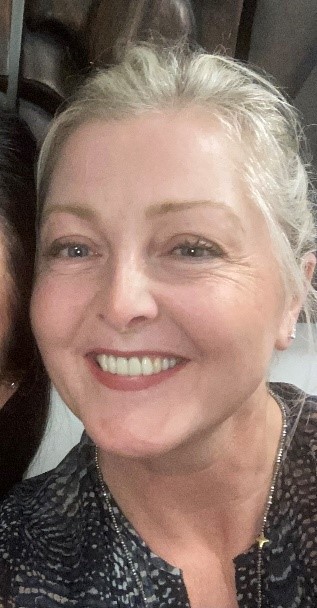Continuing medical education (CME) is considered critical for clinicians to update their knowledge as the treatment landscape evolves.1,2 The aim of CME is for clinicians to change and improve their practice as needed, resulting in better performance and improved patient care.3 Furthermore, in some regions CME is necessary for clinicians to maintain their license or board certification.4 With these considerations in mind, CME is essential for clinicians globally.
Several channels can be used to provide CME. Traditional methods include lectures and textbooks, for example. However, the delivery of education and approaches to learning have been influenced by the emergence of personal computers and, more recently, smartphones, which enable the online delivery of education, including CME. Such provision of education and learning resources is supported by the results from a recent survey of cardiac fellows. The survey found that 58% of respondents were more likely to search for information online than consult a faculty member (29%) or a textbook (3%), and over two-thirds stated they used their smartphones to search for information once a day or more, during their regular clinical practice.5,6
Challenges in the provision of and access to traditional methods of education are particularly pronounced in low- and middle-income countries. One of the most obvious challenges is limited healthcare budgets, but training facilities and resources are also lacking, access to equipment and infrastructure is limited,7 and the shortage of expert faculty can present a significant barrier to training new clinicians and increasing their number.8 For example, a recent report explained that there are limited training programs for cardiologists and cardiac surgeons in low- and middle-income countries, and CME tends to be lacking or only obtainable abroad, often with a significant cost burden.9 However, the upscaling of traditional education methods through expanding infrastructure and expert staff is constrained by the need for substantial investment and cannot be done rapidly.9
The commonality of smartphones includes low- and middle income countries — nearly half of the population in Sub-Saharan Africa owns a smartphone,10 and the widespread availability of this technology can enable the provision of education and CME online in these regions.
Therefore, analyses suggest that when resources are limited, investment in online learning offers a cheaper solution than a “bricks and mortar” approach.6 In addition, online learning enables fewer faculty to reach a larger audience of learners and allows learners to engage with the education from wherever is convenient for them and at their preferred pace.11
With these challenges in mind, it is clear that online CME may offer an important solution in low- to middle-income countries. Data that we have analyzed describing the geographic origin of learners who access our content show that the biggest proportion of organic engagements come from the U.S. — not unexpectedly. However, the second biggest proportion is from Asia, where users from India, Pakistan and Bangladesh are the three biggest contributors.
There are several factors to consider for the provision of online CME, in particular for learners in low- and middle-income countries.
- It is important that online CME is easily and freely accessible, especially in resource-poor countries.9
- Online CME needs to be mobile-optimized so the website displays clearly, as smartphones are the primary tool used to access CME in low- and middle-income countries.9 Data we have gathered on online independent education and CME developed in-house show that approximately 70% of our learners access our content using a mobile device.
- The content itself should also be designed and developed using a “mobile-first” approach, so it remains engaging and viewable when accessed by a smartphone.9
- Online education should also have a straightforward, user-friendly interface that learners can navigate easily and intuitively.9
A critical consideration of online CME, wherever it is accessed, is the use of instructional design.1,11 Such programs allow self-directed learning that evolves to provide the most effective environment for learners and offers education in visual and audio formats, along with materials to download and read, addressing several different adult learning preferences. Educational programs also need to recognize that HCPs are likely to have different starting points for their learning journeys, so they should allow learners to start at the level most suitable for them and progress at their own pace. This is particularly important for global provision of CME, where learners will have a range of educational needs and programs are reaching audiences in a variety of countries. The format of the education also needs careful design and consideration to ensure it is a suitable vehicle for the content, but also that the program works for different audiences, again reflecting differences in learner journeys.1,11 Discussion, interaction and practical, case-based learning are important aspects to include in programs, to move as close as possible to the “in-person” training experience.9 However, program designers also need to be aware that learners will have busy lives and are unlikely to have time to dedicate to ongoing training or CME. Online education is also “competing” with a vast range of other online content; learners are increasingly unlikely to watch video content for longer than around 10 minutes, and increasingly demand that content is highly engaging as programs compete with social media and the 24-hour news cycle for their attention. With this in mind, the educational activities we develop are all short videos that are designed to provide actionable learnings, even with five minutes of engagement. This approach allows learners to fit education around busy work and family lives.
A key challenge of providing CME globally is providing programs for those whose first language is not English. Education can be provided with on-screen translated subtitles and translated downloadable materials. Ideally, multiple languages should be included, in particular local languages for low- and middle-income countries, and these languages need to be chosen with care rather than automatically including those that are often used by default.”9 Another approach is for experts from different countries, particularly those reflecting areas of focus for the CME program, to provide the education, potentially in their own language.11 Such faculty can bring additional nuance and specificity to educational programs and, if chosen carefully, can be more relatable for learners in low- and middle-income countries.
A further challenge of providing online CME globally is how to reach learners in countries that are of specific interest, but that may have cultural or structural barriers. For example, China significantly restricts Western websites and social media, so U.K. and U.S. websites and social media publicity cannot reach Chinese audiences. To overcome this challenge, we partner with a provider that has a local platform to host CME programs that have been translated and uses local social media channels for publicity campaigns. We have used this approach very successfully with several of our CME programs. One program, which was of specific interest in China, engaged more than 5,250 participants there, plus a further 7,400 learners globally. This experience shows that CME providers can reach country-specific audiences by collaborating with local partners to ensure that the program is distributed through the most appropriate local channels to reach learners.
Both short- and long-term solutions need to be employed to address the challenges of distributing CME globally, in particular to low- and middle-income countries. Although some of the challenges in global CME provision can be addressed relatively simply, providers need to continue to develop approaches, including increasing interactivity and the focus on patient centricity, that offer truly equitable access to CME for HCPs globally.
References
- Moore DE, et al. J Contin Educ Health Prof 2009;29:1–15.
- AACME. Importance of CME. Available at: https://aacmet.org/cme/importance-of-cme/ (accessed 27 October 2022).
- Reis T, et al. BMC Health Serv Res 2022;22:638.
- CME List. 5 Reasons Continuing Medical Education is Important. 2019. Available at: www.cmelist.com/5-reasons-continuing-medical-education-is-important/ (accessed 27 October 2022).
- Tretter JT, et al. Cardiol Young 2020;30:560–7.
- Bokma JP et al. Cardiol Young 2019;29:1356–60.
- Barteit S, et al. Computers & Education 2020;145:103726.
- Frehywot S, et al. Hum Resour Health 2013;11:4.
- Ma X and Vervoort D. Cardiol Young 2020;30:903–4.
- Holst C, et al. Lancet Digit Health 2020;2:e160–2.
- Feldacker C et al. Hum Resour Health 2017;15:89.
- Taylor DCM and Hamdy H. Med Teach 2013;35:e1561-72.

Alison Scott, PhD, is the chief scientific officer for touch Independent Medical Education. She joined touch Independent Medical Education in 2018 as a medical director. She has over 18 years of medical education experience covering a broad variety of disease areas and a wealth of different activities, from publications to meetings to online training. Alison is passionate about delivering high-quality education that meets the needs of healthcare professionals in the digital era.
 Joel Turner, head of data & strategy insights, joined Touch Medical Media as head of digital marketing in February 2020. Joel has a wealth of experience from previous roles including head of digital marketing at another IME provider, where he was responsible for all elements of marketing to healthcare professionals, including campaigns of acquisition, retention and engagement through earned, owned and paid media. Joel also held senior roles at the Royal College of Midwives and the British Medical Association. Joel comes with a BA and MA from Sheffield University.
Joel Turner, head of data & strategy insights, joined Touch Medical Media as head of digital marketing in February 2020. Joel has a wealth of experience from previous roles including head of digital marketing at another IME provider, where he was responsible for all elements of marketing to healthcare professionals, including campaigns of acquisition, retention and engagement through earned, owned and paid media. Joel also held senior roles at the Royal College of Midwives and the British Medical Association. Joel comes with a BA and MA from Sheffield University.
 Katie Emery, senior education development director, joined touchIME at the start of 2019, prior to having worked for nearly 10 years in healthcare communications and, for the most part, in the medical education sector. An ambitious and energetic education development director, Katie is focused on providing engaging education to doctors and related HCPs to improve patient care and clinical outcomes across several key therapy areas.
Katie Emery, senior education development director, joined touchIME at the start of 2019, prior to having worked for nearly 10 years in healthcare communications and, for the most part, in the medical education sector. An ambitious and energetic education development director, Katie is focused on providing engaging education to doctors and related HCPs to improve patient care and clinical outcomes across several key therapy areas.
 Tammy Gibbs, group managing director, joined touch Independent Medical Education in 2018 as managing director of touchIME. She has over 11 years of medical education experience covering a broad variety of disease areas and a wide range of educational formats. Like the rest of the IME team, Tammy has a strong desire to develop first class, innovative education initiatives that really focus on adult learning preferences and breaking away from the fatigue of didactic online education. Tammy has worked in healthcare throughout her career, including a significant period of time working for the NHS.
Tammy Gibbs, group managing director, joined touch Independent Medical Education in 2018 as managing director of touchIME. She has over 11 years of medical education experience covering a broad variety of disease areas and a wide range of educational formats. Like the rest of the IME team, Tammy has a strong desire to develop first class, innovative education initiatives that really focus on adult learning preferences and breaking away from the fatigue of didactic online education. Tammy has worked in healthcare throughout her career, including a significant period of time working for the NHS.